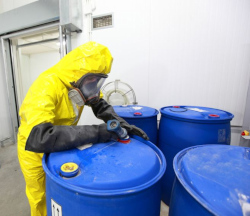Employer's Obligation to Remove Hazards
OSHA standards require an employer to render the workplace free of certain hazards by any feasible and effective means which the employer wishes to use.
Hazards describe the surface causes (conditions) for accidents in the workplace. The employer must also develop effective safety management systems that address the underlying root causes of accidents.
For example, employees performing sanding operations may be exposed to the hazard of fire caused by sparking in the presence of magnesium dust. Conducting additional training might be one way management will try and fulfill their obligation to abate hazards.
However, the "hazard" is the exposure to the potential of fire; it is not the lack of training and supervision. Do not confuse removing surface causes (unique hazards and exposures) with the underlying root causes (safety management system failures) contributing to the hazards and exposures.
The employer's fundamental obligation is to keep the workplace free of hazards and exposure by addressing both the unique surface causes and their underlying root causes.
Knowledge Check Choose the best answer for the question.
1-3. How can an employer keep the workplace free of hazards and exposure?
You forgot to answer the question!

